There are three species of monarch butterfly in the Americas; the northern monarch, southern monarch and Jamaican monarch. Additionally, there are several subspecies and colour morphs.
Contents
The American Monarchs
There are three species of monarch butterflies, all of which look very similar; the northern monarch, the southern monarch and the Jamaican monarch. Though northern monarch butterflies can now be found throughout the world; they originated in America.
The caterpillars of all these species feed on milkweed and have the characteristic fat body with black stripes. Telling them apart can be difficult from sight, but looking at where they’ve been found can be the easiest way to know which is which.
Also read: What do Caterpillars Eat? (Vegan vs. Carnivore Caterpillars)
The Northern Monarch
The northern monarch, often simply known as the monarch butterfly, is native to North and South America but has spread across much of the globe. Its orange wings are patterned by black veins, while the black border is peppered with white spots.
The caterpillar of the monarch butterfly goes through several different forms as it grows and develops. It starts out white, turning green in time. Its most distinctive form is that which it enters after these initial stages.
The caterpillar is white with yellow and black stripes. It has two sets of black tentacles, one on the front of its body and one on the back. The tentacles at the front are longer and are used in part as sensory organs. The tentacles also help confuse the predators as to which end of the caterpillar is which. Predators sometimes bite the tentacles, allowing the caterpillar to escape.
Also read: Why are Young Caterpillars Left to Look after Themselves?
The Southern Monarch
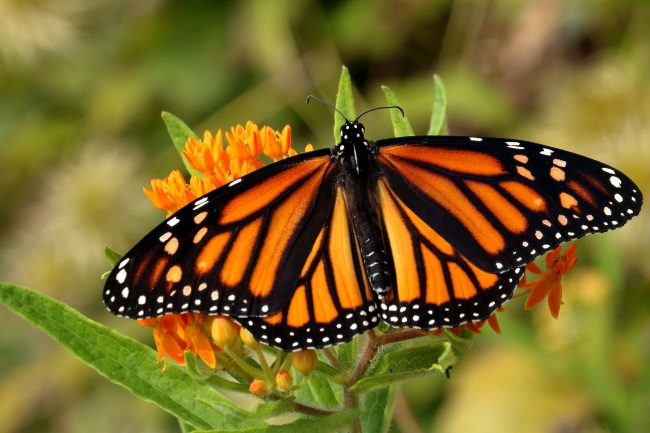
The southern monarch is less celebrated and well-known than its northern cousin. Historically, the two species were one, but today they have different ranges and are genetically distinct. It is found in South America in tropical and subtropical areas in Brazil, Uruguay, Paraguay, Argentina, Bolivia, Chile and southern Peru. The migration is much less well understood than the northern monarch, but it is still thought to take place with species moving between different climatic regions.
The southern monarch caterpillar spends its life munching away on milkweed like other monarch species. It is a beautiful green colour, with black stripes, distinguishing it from the northern monarch butterfly by a lack of yellow and white. It still carries the long black tentacles on the front of its body and two at the back.
Also read: Do Butterflies Migrate? Which Species and Why?
The Jamaican Monarch
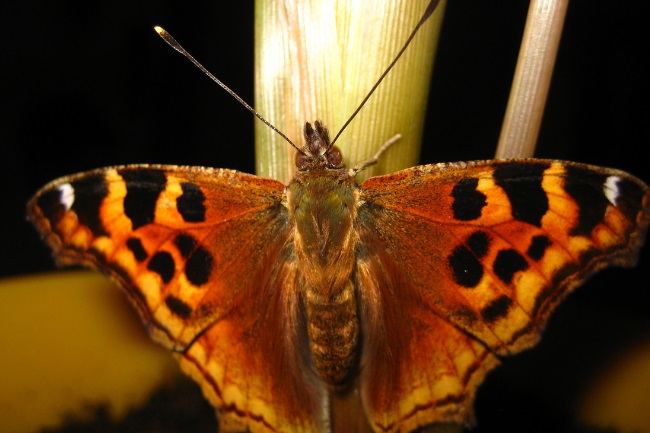
Jamaican monarch, also known as the Caribbean Queen, is a darker and smaller species of monarch butterfly. It has a much smaller range than the other two species, found from Jamaica to Hispaniola.
Subspecies
As well as the three monarch species, there are several subspecies and colour morphs in the Americas. Most are pretty understudied, with the main species getting most of the attention. The caterpillars are very similar to their main three species, mostly their lifecycle differentiating them.
Hawaii’s white monarch
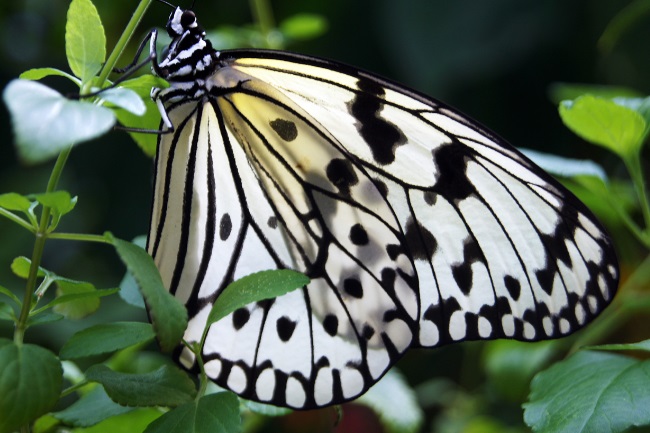
The white monarch of the Hawaiian island Oahu is a colour morph of the Northern monarch butterfly. It has only appeared on the Hawaiian island since the introduction of its favourite plant, the milkweed. The white colour morph only makes up a small percentage of the island’s population and lives alongside the traditionally coloured orange butterfly. It is hypothesised that the white variation is harder to see as it feeds on milkweeds, and it is predation that is fueling its appearance.
Also read: What Eats Caterpillars? (A List of its Enemies)
Non-migratory monarchs
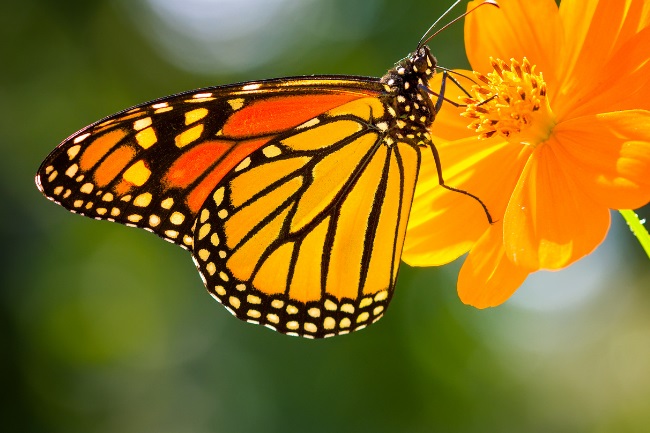
Several non-migratory subspecies of the monarch butterfly exist. Local climates allow them to remain where they are, whilst their relatives make the big migration to keep themselves out of chilly weather. The resident species live respectively in Puerto Rico, the Virgin Islands, Cuba, the Bahamas and Caymans, Tobago, and the Andes.
Most are pretty similar to the North American species, although some, like the subspecies nigrippus, are a darker colour with more black on the wing and a more elongated wing shape.
Monarchs of other countries
The American monarch butterflies are part of the Danaus family. These butterflies are found across the world, often also being called by names such as queens, tigers or milkweeds, because of their colours or food choices.
The African Monarch
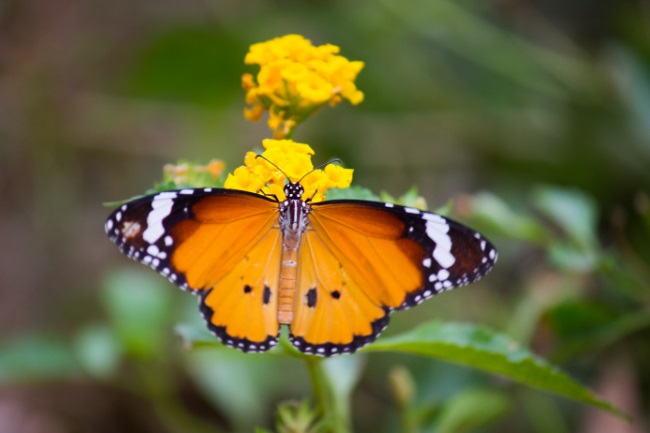
Also called the plain tiger, this species is very similar in colour to the monarch, with beautiful blacks, oranges and whites. It has fewer black stripes, with larger orange areas on the inner wings. The caterpillar doesn’t have the characteristic yellow stripes of the American monarchs, having black stripes on a white background, marked with yellow dots and lines. Like the Northern monarchs, it has two tentacles at the front and two at the back of its body, but has two additional tentacles at the middle.
The Indian Monarch
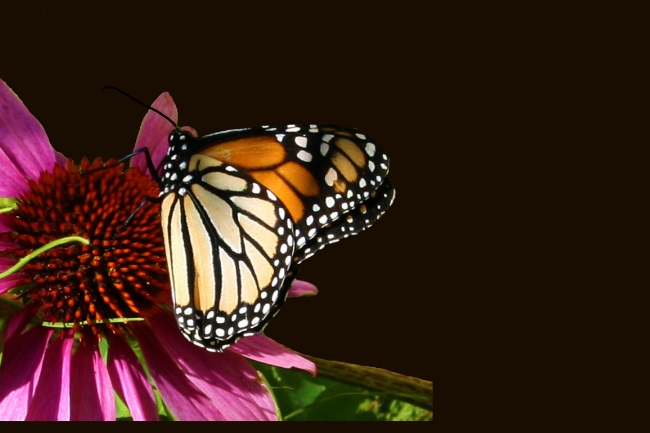
Found across south-east Asia to Australia, the adult Indian monarch looks a great deal like it’s American cousins. Some wider lines and darker oranges are the main things that make it seem slightly different. The caterpillar, however, is very distinctive. It’s body is a deep chocolate brown, with white and yellow splodges arranged in lines down its body. It also has much smaller tentacles than the American Monarchs, with two in the centre of its body rather than at the rear.
Also read: What Caterpillars Turn Into Butterflies? (Species Explained)
The monarchs of the sky
These captivating butterflies are globally admired for a reason, their stunning colours and attractive patterns making them instantly recognisable. Although the caterpillars may be less well known, they are just as striking in their own right. Though we may look at these colours only with an artist’s eyes, they are designed to warn predators of the toxins within. Perhaps beauty is only skin deep after all.

